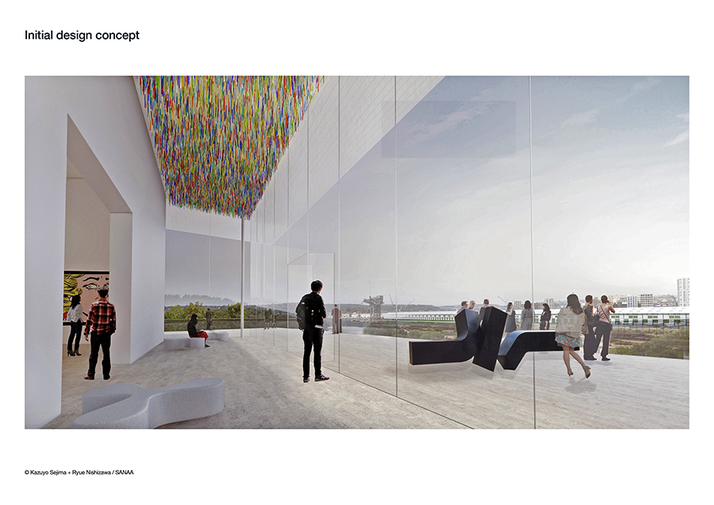
R
E
V N
E
X
T
In early April it emerged that the board of the Art Gallery of New South Wales (AGNSW) declined to renew its incumbent director Michael Brand’s five-year contract. His contract is due for renewal this June, and instead of offering another full term, Brand has been presented with a 12-month extension, which would take him through to June 2018.
David Gonski, president of the AGNSW board of trustees said that the decision was based on public service rules introduced in 2014—two years after Brand joined the gallery—concerning long-term senior appointments. In a statement Gonski said: “The role of the AGNSW director has to transition to the new Public Service Senior Executive contracts, a government requirement for all current senior executives.” The move would almost certainly require Brand’s current role to be widely advertised and could result in Brand having the humiliating experience of having to re-apply for his current position. Brand has accepted the 12-month extension.
Brand is currently under pressure at AGNSW due to his managerial style, which is seen as aloof and abrasive. His handling of recent redundancies has been anything other than diplomatic. Furthermore, the lack of traction concerning fundraising for the Sydney Modern Project, AGNSW’s extension that will double the gallery’s size, is expected to cost in the region of AUD 450 million (USD 338 million) of private and public money.
The strategic vision and master plan for Sydney Modern was launched in 2013 with the NSW Government committing AUD 10.8 million (USD 8 million) to advance plans. This was topped up with another AUD 4 million (USD 3 million) in June 2015, the month after the gallery announced that the international Pritzker prize-winning Japanese architectural practice SANAA had been chosen as the preferred architects. The state government’s initial funding for planning ended last June and nothing more has been forthcoming even though NSW Government has a cultural and arts funding kitty of AUD 600 million (USD 450 million) available from the proceeds of electricity privatization. However several large swaths of that money have already been allocated to arts institutions: AUD 202 million (USD 152 million) has gone to upgrade the Sydney Opera House and the vibrant multi-arts center Carriageworks has been allocated AUD 50 million (USD 37.5 million).
What has riled several members of the local community is that SANAA’s initial plans for the AGNSW extension over grassy slopes that afford priceless views of Sydney Harbour and Woolloomooloo is more about money and corporate events than it is about art. The most vociferous spokesperson against the development is former Australian prime minister Paul Keating who, writing in an opinion piece in the Sydney Morning Herald, said “Brand wishes to construct a vast function center and observation platform—a megaplex made feasible only by appropriating open space across an expressway and on land belonging to the Botanic Gardens.” Adding, “. . . he proposes to build a large entertainment and special events complex masquerading as an art gallery.” But there will always be detractors for such projects.
The lack of traction around fundraising for the Sydney Modern Project, Brand’s approach toward handling staff redundancies in recent years, and a recent attempt to take control of the Art Gallery Society of New South Wales—an independent membership organization that supports the AGNSW through acquisitions for its collection—have deterred many prospective benefactors and is sure to have cast a shadow on Brand’s future at the gallery. Gonski, who was appointed to the role of president of the AGNSW board of trustees in December 2015, is one of Australia’s most sophisticated businessmen. If Brand falls out of favor with him, then his future with AGNSW will be tarnished.
In 2014, Brand appointed John Richardson, formerly chief commercial officer of South Sydney Rabbitohs Rugby League Football Club, in the newly created role of director of development—a euphemism for fundraiser—with direct responsibility for raising private funds for the Sydney Modern Project. “This new senior executive role will create, implement and lead a major fundraising strategy,” Brand said via a media release. Since then, no public benefactors have been announced and one can only imagine it is because there are none and no further financial pledges have been made by the state government. When asked about funding for Sydney Modern, Simone Bird, AGNSW’s communications manager told ArtAsiaPacific: “A capital campaign will be launched in coming months and that no other announcement is expected imminently.”
Sydney Modern is due for completion in 2021 on the occasion of the AGNSW’s 150th anniversary, yet, so far, not one sod of earth has yet been turned. Many Sydneysiders are now simply asking, can Brand deliver Sydney Modern? Without funding from either a public or private funding model and with a personal contract that expires in little over one year, the answer is almost certainly, no.
To read more of ArtAsiaPacific’s articles, visit our Digital Library.




